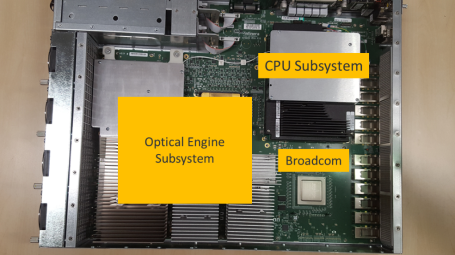Infinera and Lumentum Present on Open Line System at Facebook’s TIP Summit; Support Voyager Program
November 2, 2016 at 7:28 AM Leave a comment
Vice President, Marketing
At this point it has almost become an immutable law – that new applications will arise to consume bandwidth as fast as it can be delivered. More and more of those applications and the associated traffic exists inside and between the data centers of the large internet content providers (ICPs). Not only does this rapid bandwidth growth result in significant network investments, it exposes scaling and manageability challenges at both ICPs and service providers alike. At Infinera, our goal is to help our customers build, operate and grow these networks as smoothly and as cost-efficiently as possible.
Infinera pioneered the small-form-factor server-like dense wavelength-division multiplexing (DWDM) appliance with the Cloud Xpress, recently introduced the Cloud Xpress 2 and is a clear leader in building DWDM systems that deliver scale-out network architectures. With these credentials, it is no surprise that Infinera has played an active role in Facebook’s Telecom Infrastructure Project (TIP). Given Infinera’s participation at TIP is multi-faceted, in this blog I am focusing on two important areas as we participate in the TIP Summit on November 1 and 2 at Facebook’s campus in Silicon Valley.
First, Infinera and Lumentum are jointly presenting to the Open Line System (OLS) Working Group on what we see as the key attributes of an OLS, areas of required industry collaboration and the essential open questions that need to be answered. At Infinera we believe in modular and open systems that can be consumed by our customers as they see fit, either as fully configured and integrated open networks or as modular nodes. Most importantly, we want to help the industry move past OLS marketing hype to deliver an OLS that is truly open without restraint — one that can accept any flexible grid channel (single wave) or super-channel (multiple waves) and that does not impose proprietary requirements for alien wave insertion into the system. To date we have found that many claimed OLSs have multiple constraints that can intentionally or unintentionally block alien waves from working at peak performance, or even working at all, and thus are a good distance away from meeting the definition of open. Our goal is to change that. It is this same objective of openness that led us to be the first system vendor in the optical communications industry to test interoperability with Lumentum’s whitebox-based open line system.
Second, Infinera welcomes and is supportive of the Voyager program – an initiative that fundamentally advocates that the routing function at the edge of the data center should be converged with DWDM optics into a small server-like product, collapsing two systems into a single compact platform. The initiative defines a 1 rack unit (1RU) form factor that supports a minimum of 12×100 gigabit Ethernet (GbE) QSFP-28 (quad small form-factor pluggable) client transceivers and 800G of line side DWDM bandwidth. The reference design prescribes a specific form factor and recommends components for client and DWDM optics, CPU, DSP and switching ASIC with a goal to improve interoperability and reduce overall costs. The open software approach includes choice of an open operating system and open source network management software.
Infinera is particularly excited about this announcement because TIP is different than a standards body – it is about defining a reference design, open interfaces, information models and open software requirements, but also leaves room for industry innovation to drive successful commercial models and rapid deployments. The reference design provides the innovation headroom to exceed the specification baseline where Infinera can deliver an implementation that utilizes our family of Infinite Capacity Engines leveraging our digital signal processor (DSP) and photonic integrated circuit (PIC) technologies to provide a best-in-class solution and achieve an industry -leading cost structure that is a key benefit of vertical integration with no margin stacking.
In fact, Infinera already has a good amount of experience in building such a solution. Our purpose-built Cloud Xpress platform, which has been deployed in production networks for the last two years around the world, is built on a similar architecture – including a Broadcom switching fabric, x86 CPU subsystem and Infinera’s optical engine based on the FlexCoherent DSP and PIC optics. We look forward to sharing our experience with building and deploying this system and, going forward, enhancing the platform collaboratively with the ICPs, service providers, vendors and the ecosystem partners.
In summary, Infinera looks at the TIP program as extremely well aligned with its corporate strategy of delivering purpose-built, open and standards-compliant platforms for large-scale networks ,and we applaud Facebook for taking the initiative to drive this important transformation in the industry. Stay tuned for exciting things to come!
We hope to see you at Insight Infinera 2016 at 8:30AM on November 17th either in person or via webcast (register here).
Related links:
- Press release: Infinera Collaborates with Industry Leaders on Telecom Infra Project
- Press Release: Infinera Validates Intelligent Transport Network Portfolio over Lumentum White Box Optical Line System
Entry filed under: Infinera Cloud Xpress, Internet Content Providers, Uncategorized.








Trackback this post | Subscribe to the comments via RSS Feed